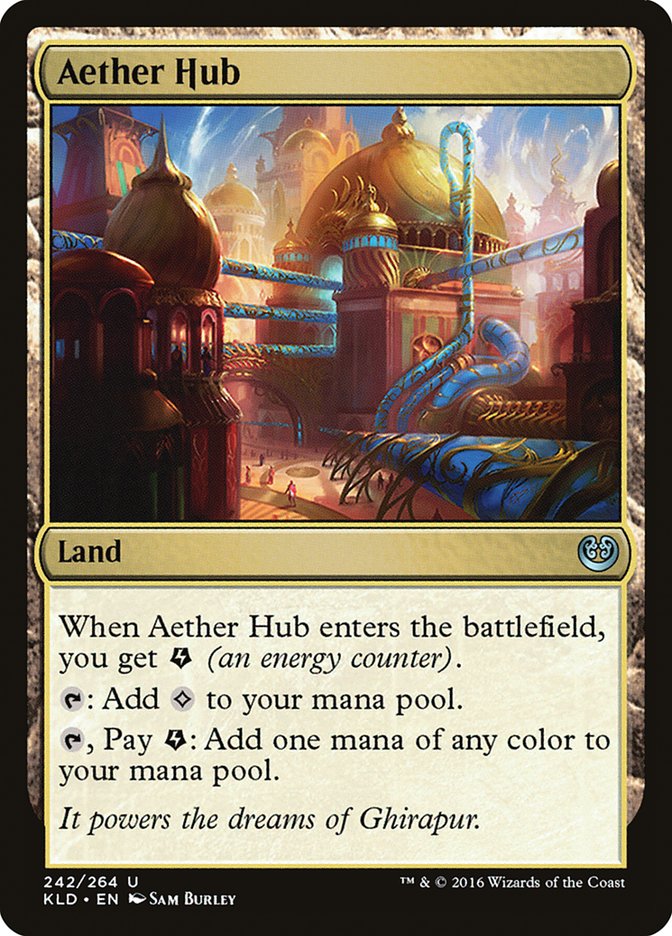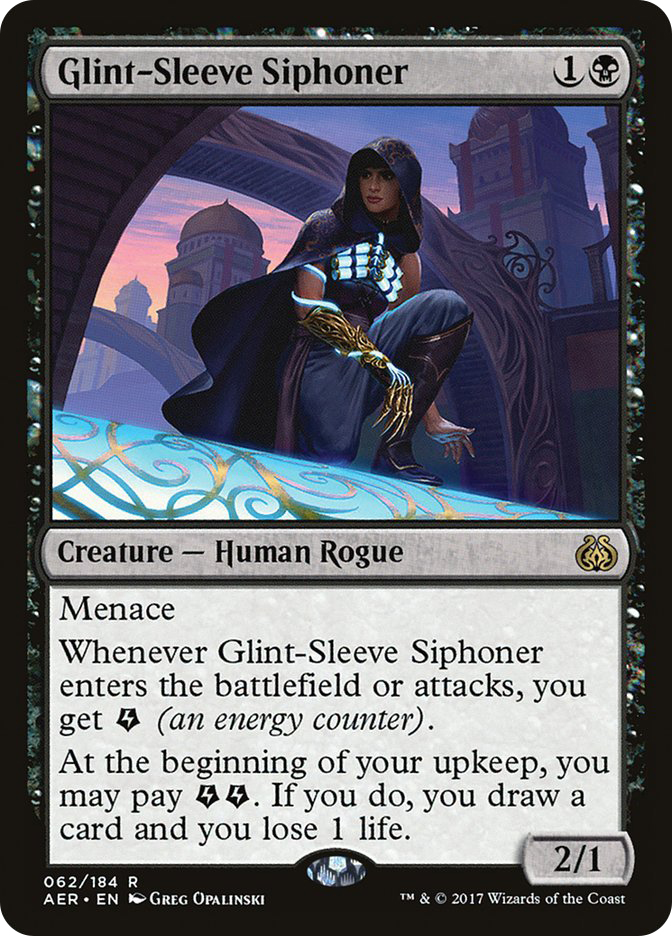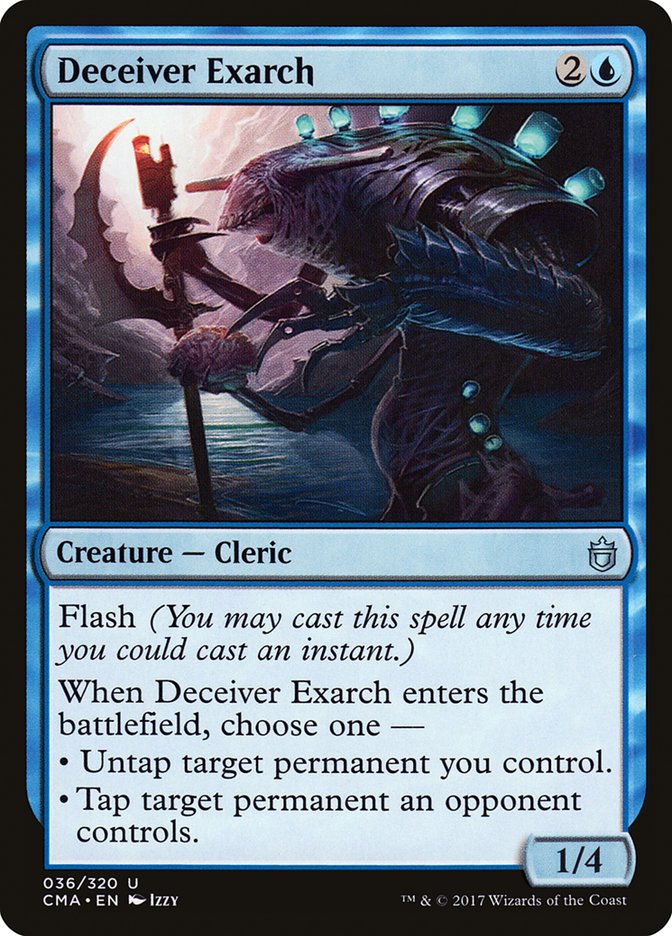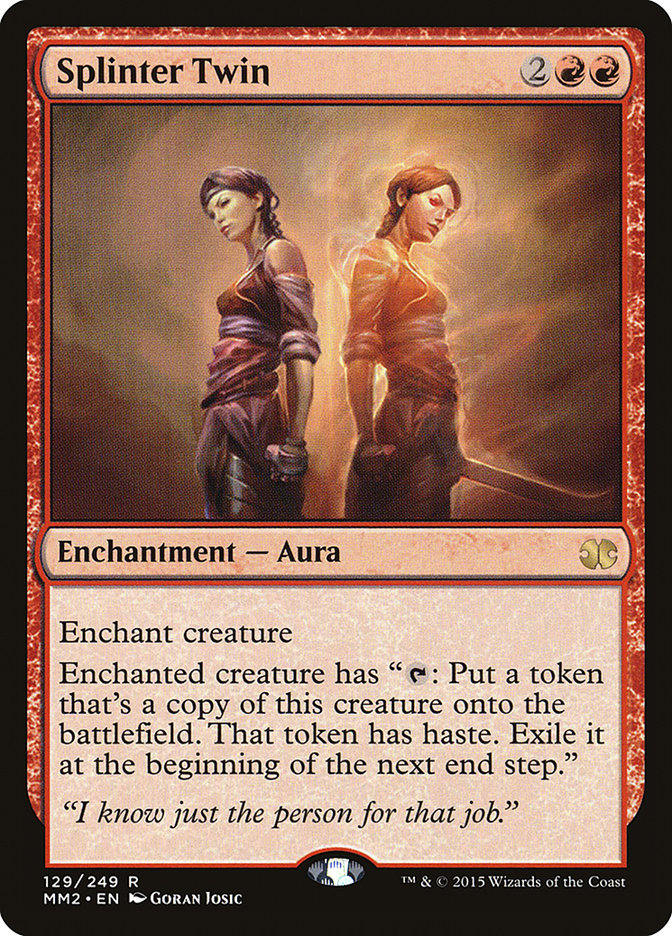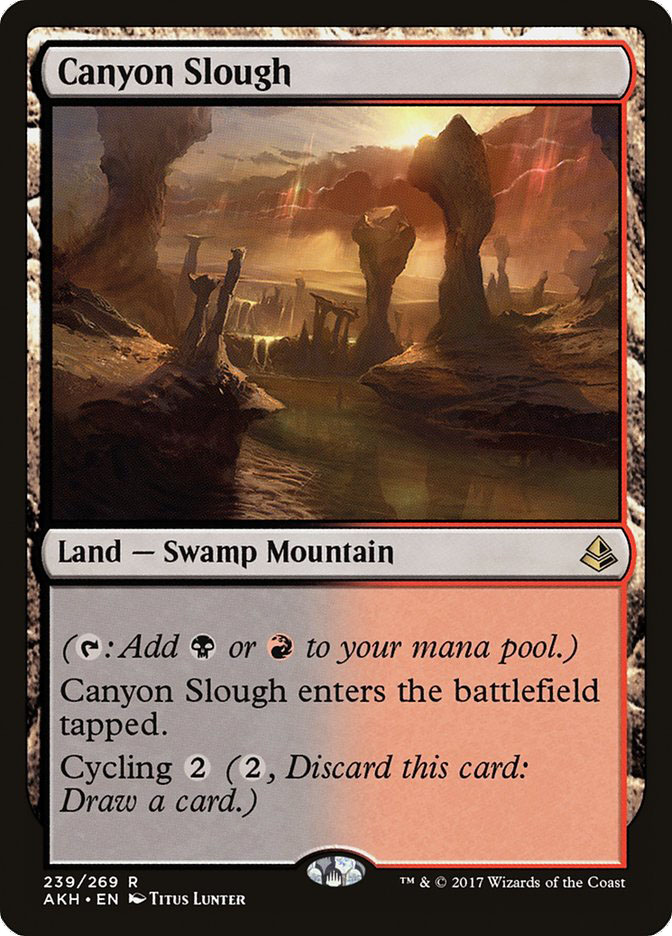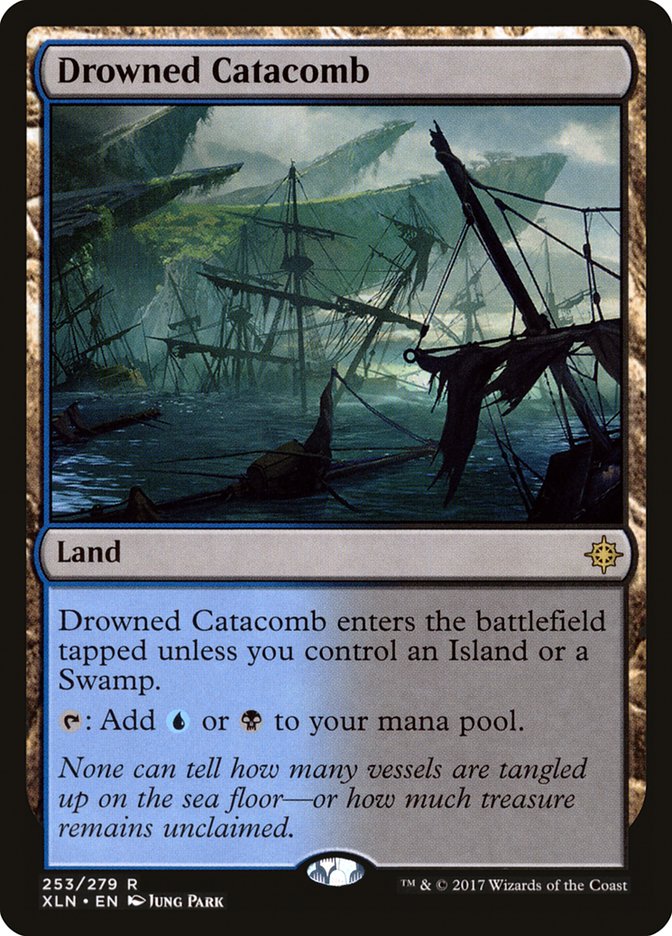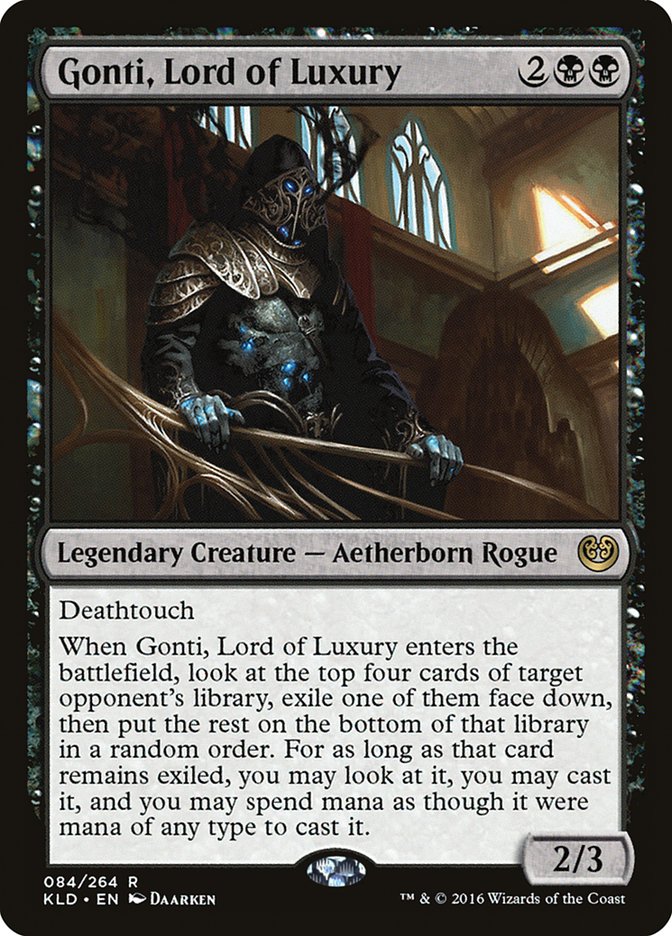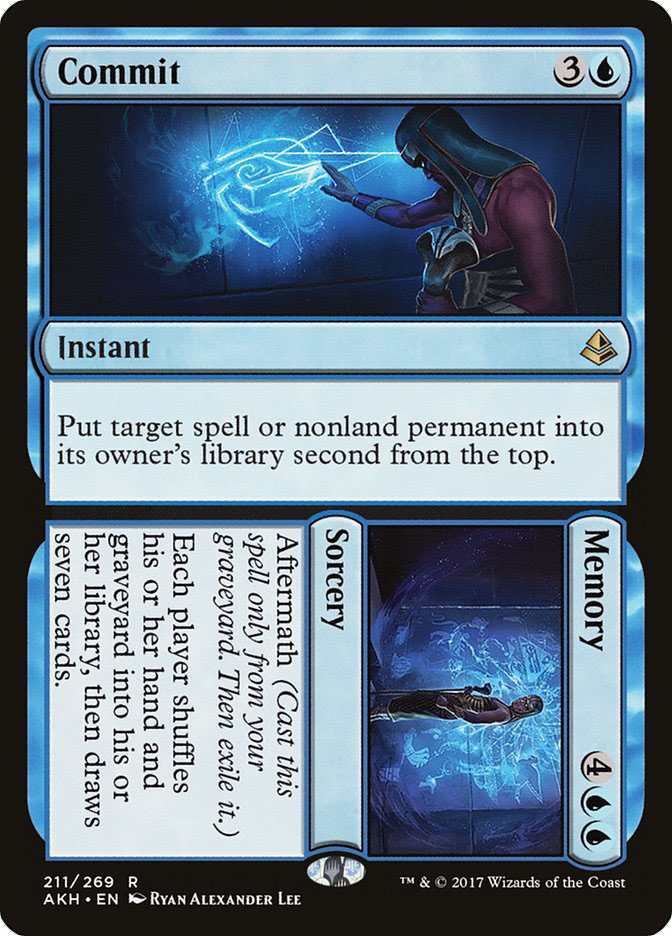I might look a little foolish writing an article claiming the best deck in
Standard is a three-color deck after my rant about how bad the mana was
last week,
but two thoughts come to mind:
One, progress waits for no one. Two, the best deck in the last Standard
format was a three-color deck in Temur Energy
The reason Temur Energy was the best deck in the last Standard format is
obvious. All the blame lies with one card:
The power level of Aether Hub is so high, it’s offensive. In a format of
decks that are inconsistent, Temur Energy had a land that always entered
the battlefield untapped and always made all five colors of mana. All it
asked you to do was play some of the energy cards, something you were happy
to do anyway. Sometimes the pain-free City of Brass even paid me for
playing with it when I drew it in combination with Harnessed Lightning to
kill a 4/4 or assisting me in making a stray Thopter with Whirler Virtuoso.
Nowadays, the synergy between Glint-Sleeve Siphoner and Aether Hub is
completely busted. Glint-Sleeve Siphoner is a nice mix between Dark
Confidant, Stonefore Mystic, and Goblin Electromancer. One thing to note,
however, is that Glint-Sleeve Siphoner is actually way better than Dark
Confidant against Mono-Red since you can never take more than one damage a
turn, you can choose to stop using it if you’d like, and you can just
profit one energy when you decide to trade it off the turn you play it. And
it still functions like Bob in the matchups you want it to. You can just
play it turn 2 and play a removal spell every turn of the game while
drawing two cards a turn.
Yesterday I played a turn two Glint-Sleeve Siphoner off turn 1 Canyon
Slough and turn 2 Drowned Catacombs, my opponent played their own
Glint-Sleeve Siphoner, and in my upkeep, with the triggered ability of my
Siphoner on the stack, I used Harnessed Lightning on theirs to both be mana
efficient and draw an extra card immediately now that I had excess energy.
This may seem like a minor upgrade, but I just upgraded my Harnessed
Lightning from Terminate to Annihilate.
Who said Constructed was about small edges?
Putting Glint-Sleeve Siphoner in a deck that has a good late game that
generally trumps cheap removal spells and doesn’t player other cheap
creatures is ideal because it immediately puts your opponent to the test.
If they didn’t put enough cheap removal in their deck, they’ll lose when
you play Aether Hub and Siphoner on turn 2. But if they put too much cheap
removal in their deck, they’ll be weak against my Plan B: The Scarab God.
This is a proven successful strategy that makes it hard for an opponent to
sideboard against from back in the day when people played Stoneforge Mystic
and Jace, The Mind Sculptor in the same deck.
Say hello to Standard’s Jace, the Mind Sculptor.
The reason that I equate The Scarab God to Jace, the Mind Sculptor is that
they’re both mythic rares and they both lead to winning the game almost
every time you get to untap with them. Further, they both win the game in a
way that, sometimes, isn’t that obvious to the opponent. The opponent
shouldn’t outright concede to either of these cards, because they are
beatable, but they add a new dimension to almost any deck and often times
force the opponent to play on from a losing position. They also afford you
the luxury of building your deck in a way where you just play all the best
reactive cards for all the popular decks and you never have to worry about
if you’ve drawn too many bad cards for a certain matchup because what’s in
your hand doesn’t even matter when you have The Scarab God on the
battlefield; you’re obligated to spend all your mana on it each turn.
If you don’t like the Jace, the Mind Sculptor comparison, then how about
The Scarab God is Deceiver Exarch and Splinter Twin stapled together.
Because just like Exarch + Twin, if you untap with The Scarab God, you will
win the game.
That one not working for you? Then how about The Scarab God is Elspeth,
Sun’s Champion.
The point I’m trying to illustrate is that, yes, I’m aware The Scarab God
is expensive, but the high cost is mitigated by the fact that it helps you
come back from a losing position all by itself. You can return Whirler
Virtuoso to make extra Thopters which simulate the blocking effect of
Elspeth and you can use the Zombies to scry into removal.
Okay, one more. The Scarab God is Siege Rhino mixed with Dig Through Time.
Okay, I may be getting a little out of hand on this one, but you get the
point. The Scarab God can deal direct damage to the opponent and that’s a
good option to have against people who want to go over the top of you. The
best way to beat someone who has Vraska, Relic Seeker or Nicol Bolas,
God-Pharaoh isn’t to sideboard in Negates to trade off and hope to win a
topdeck war; it’s to kill them before they can use these cards effectively.
I also mention Dig Through Time since the The Scarab God is very hard to
interact with, it provides card advantage, and it actually provides a
unique type of card selection/tutoring that people often overlook. If I can
reanimate a Gonti, Whirler Virtuoso, or Torrential Gearhulk at any time,
it’s not that different than me just tutoring my deck for one of the cards
I want and putting it on the stack. Having a wide swath of creatures to
choose from and even creatures with abilities that simulate spells makes
The Scarab God even stronger.
Creatures (14)
Planeswalkers (2)
Lands (27)
Spells (17)

Grixis Energy was the most successful deck at Grand Prix Memphis, and I
tried to make a homebrew version that combined the best aspects of the
different lists I saw in the Top 8. I played two leagues on Magic Online to
test my theories out and I went 4-0 drop in both of them. One thing I like
to do when testing out ideas is drop from MTGO leagues when I’m 4-0 to
protect my decklist from being published on the 5-0 league results page.
This is a habit I’ve formed from preparing for the Pro Tour, and although
protecting my secret tech has no value for me now, I figured I would do it
anyways–not only to keep up with good habits but also because it means
that you can’t get this decklist anywhere but exactly here in this article.
To further explain why I drop from leagues at 4-0, when I was preparing for
Grand Prix Houston 2016 I was obsessed with my take on Five-Color Rally.
But purely in the interest of being thorough in my testing, I tried the new
hot Hardened Scales deck and went 10-0 in league play. After going 10-0, I
put the deck down since I knew I was going to play Five-Color Rally anyway.
Word spread quickly that I was interested in Hardened Scales and I even saw
an article on a major website claiming they saw me playing the deck. In
this instance, having my record showcased actually worked to my advantage
as the deck’s popularity took off, I played against it five times in the
tournament, and went 5-0 against it.
It was even more extreme because it was a hugely favorable matchup for me
and all the people who chose to play the deck were stronger players, so the
popularity of the deck took on a life of its own, and the end result was I
got free wins against Paulo Vitor Damo Da Rosa, Shahar Shenhar, Ben
Friedman, Ross Merriam, and Chapman Sim. Winning the tournament was a
breeze and it was one of the first events they ran after changing the first
place prize to $10,000. Ever since, I’ve made a new Magic Online account
before each Pro Tour and I’ve become more secretive with my process, but my
return to writing marks the turning of a new leaf as I’m giving the fans
every bit of strategic advice I have.
Turning my attention back to the decklist above, if I had to give credit to
anyone, it would go to Matt Kling who landed closest to what my brain feels
is the optimal build of Grixis Energy. I’ll be honest and say I fear we
might be caught dead in the middle of Energy Winter and that the bans may
have done very little to improve Standard. I suspect all the bannings did
was make it so I have to play a black deck with the best energy cards
instead of a green one (luckily, I kind of like the black cards now). My
biggest fear is that removing Ramunap Ruins from Mono-Red might turn the
classic Mono-Red versus Energy matchup from 55/45 in favor of Energy to
60/40 in favor of Energy because if they can’t get lucky and burn me out,
how will they ever win?
You can see from my decklist that I want to come with the best answers
possible to Rekindling Phoenix, Hazoret the Fervent, The Scarab God, and
Scrapheap Scrounger. As such, I’m happy to play with Revolutionary Rebuff,
Essence Scatter, Supreme Will, Commit, Vraska’s Contempt, Magma Spray, and
Confiscation Coup.
One thing I must point out – I play four copies of The Scarab God in my
maindeck and I’m proud of it. Maybe a day will come when enough of the
metagame plays cheap counterspells and numerous copies of Confiscation
Coup, but that day isn’t here yet, and the way the decklists look now, the
worst thing that can happen to me when I play The Scarab God is it being
exiled via Vraska’s Contempt. If that’s the case, I’m happy to draw
multiples. If my first copy of The Scarab God doesn’t die, I don’t care
what’s in my hand because I’m obligated to spend all my mana on The Scarab
God every turn anyway.
Another thing to note is that I play 27 lands and I’m strongly considering
a 28th. Canyon Slough and Fetid Pools both counting as Swamps to make
Drowned Catacomb and Dragonskull Summit enter the battlefield untapped is a
broken interaction and slots nicely into the Grixis shard. As explained
earlier, Aether Hub is overpowered so obviously I’m playing four of those.
Spirebluff Canal is awesome and I would love to play four, but I’m nervous
about too many enters the battlefield tapped lands and I’m capped at how
many fancy lands I can play.
I need my eight cycling lands so my two-color lands can enter the
battlefield untapped, I need my two-color lands so my draws can come out
buttery smooth, and I put my foot down on one Island, one Mountain, one
Swamp so I can have adequate protection from Field of Ruin and Settle the
Wreckage. 27 lands might seem extreme, but with eight of my lands having
cycling, that’s a big way to mitigate mana flood, and I also want to march
up to five mana for The Scarab God and nine mana so I can play The Scarab
God and activate it in the same turn.
Gonti, Lord of Luxury has been super filthy for me lately. In game 1
against U/B Control, enough of their deck is hard counters that if they let
Gonti resolve, it can be a big problem for them and just casting it puts
the fear of God into them that it usually draws a counterspell itself. The
more cards you play that the control deck feels obligated the counter, the
better your matchup gets. If they put a Gonti in my graveyard and they lose
a counterspell in the process, The Scarab God grows even stronger. I saw a
few builds with Gonti in the sideboard and I get it, but it’s been so
phenomenal in my testing (except against Mono-Red) that I feel they belong
in the maindeck. It’s like a poor man’s Rogue Refiner; it enters the
battlefield and produces a little bit of value and leaves behind a body
they need to deal with eventually.
People are often skeptical of the one Commit, and I always feel the need to
reiterate that I’m certain this deck wants this card and I wouldn’t leave
home without it. One way to view Commit that makes everyone comfortable is
it’s a lot like Vraska’s Contempt number five since you pay four mana and
you neutralize any card like Hazoret, The Scarab God, or Reklindling
Phoenix. By now, everyone knows just how important exiling threats are in
Standard.
Another thing we take for granted is that Temur Energy could play Appetite
for the Unnatural and have an easy way to destroy enchantments, but Grixis
colors are literally incapable of removing an enchantment and there are
some very problematic ones you might face like Profane Procession or
Ixalan’s Binding. Commit also has the added benefit of being able to
“counterspell” Carnage Tyrant, one of the cards I fear the most. Carnage
Tyrant is super hard to beat, but it’s only in a small percentage of decks
those decks usually only play two copies, so it’s totally impractical to
sideboard against it since you’re already so unlikely to play against it in
the first place. One thing I try to do is include stuff like Commit and
Doomfall, sweet answers when they come up but don’t cost me too much since
I can still use them in other matchups. Similarly, when I give myself one
Supreme Will and one Commit, I also give myself two awesome counterspells
for Torrential Gearhulk and Fumigate in game 1.
The Memory half of Commit can be used to excellent effect when your
opponent is mana screwed or has missed key land drops by turning a small
advantage into a big one. Think about it like this: If my opponent is
playing G/R Monsters and they have three or four lands on the battlefield
and I’m on the play and I play my sixth land, if I’ve cast Commit already
it’s reasonably likely there’s a clean battlefield. And since I have more
mana than they do, if I decide I dislike my position, I can cast Memory and
accept I’ll get hit by a Glorybringer with the hope that my seven new cards
and draw phase contain a Vraska’s Contempt and a counterspell that will
allow me to turn the game around. This is a really common play and
increases the likelihood you win that game a large amount and even more if
it’s a game where you mulliganed.
When I view my deck as a list of 75 cards and not as a 60 card maindeck and
15 card sideboard, I can see that after sideboard in slow matchups I have
Arguel’s Blood Fast, Glimmer of Genius, Supreme Will, and Torrential
Gearhulk. Throw in the scry from The Scarab God and games just lasting
forever, and you just see a huge portion of your deck, so having a few
one-ofs that are passable in most of your games and totally amazing in
others is just good deckbuilding. You’re going to play against people who
don’t diversify their card choices and you’re going to shred them to pieces
because you’re more likely to have an advantage after sideboard, and it’s
harder for them to play the games because they can’t predict what cards
we’ll have.
The Deck to Beat
I may only be eight matches deep with this take on Grixis Energy, but this
version has been amazing, and playing with it has been so much fun that
I’ve scoured the SCG Tour and Premier Play schedules to try and find any
event I could go to just to play it. I’m not claiming it’s perfect yet, but
I feel like I’ve taken some very large steps in the right direction. If
you’re looking for a Standard deck to play this weekend, I cannot recommend
this take on Grixis Energy highly enough.


